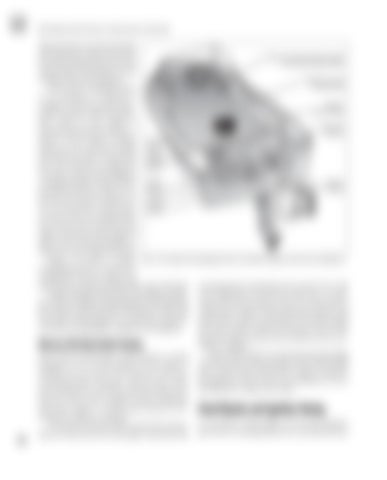POWERBOATER’S GUIDE TO ELECTRICAL SYSTEMS disconnect this wire from the back of the ignition switch and recheck Remote control with key switch the meter reading. If the meter now and neutral safety switch reads infinity, the ignition switch is faulty and must be replaced. Remote control harness plug If the meter reading has little or no resistance, it indicates a complete circuit to ground, meanBattery, Positive cable ing the wire that connects the ignition switch to the engine is Electrical shorted to ground and must be rejunction paired. If all of these readings 12 volt Battery check out, turn off the key switch Battery, and check your meter. You should ground have a low resistance reading near cable zero ohms. If your meter still gives a reading of infinity, check that the Starter Ignition motor module ground for the key switch is conSolenoid nected and in good condition. If Engine it is, you may have a break (open ground circuit) in the wire leading from the switch to the terminal on the engine. Check the entire length of this wire for a break and either install a new wire or splice the break. Figure 7-20 shows a typical Fig. 7-20. Typical wiring diagram for an outboard-engine remote-key installation. wiring diagram for a remote-key installation with the typical test points shown and the possibly faulty wires indicated. remaining lead coming from the switch. Now with If after testing the stop circuit you still have a prob- your multimeter set to the low-ohms (R × 1) scale, lem with your engine not shutting down with either the connect the meter probes to the two switch leads (it key switch or the stop button, the fault is in the CDI really doesn’t matter which probe goes where) and unit itself. Unfortunately, it’s a solid-state sealed de- position the switch in your hand as it would normally vice and is not repairable; it will have to be replaced. rest on the engine with the trim down. The switch should be open, and the meter should read no conMercury Tilt-Stop Switch Testing tinuity or infinity. Next, tilt the switch in your hand and tap the high Some mid-sized and larger outboards have a switch end of the switch with your finger. The switch should designed to cut out the ignition if the engine is close, and the meter should now indicate continuity trimmed up too much. It’s located in the trimthrough the switch. If your test readings are not as mounting bracket assembly. The tilt-stop switch described here, replace the switch. prevents the lower-unit water-pickup port from raising out of the water enough to cause inadequate water flow. Figure 7-21 shows this switch on a 70horsepower Mercury outboard. To test the tilt-stop switch, remove the mount- It is possible to thoroughly test all of the ignition ing screw that secures it to the engine. Disconnect the parts, have everything check out, and still not have
Final Checks and Ignition Timing
120


































